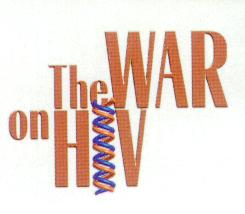 |
How
the virus works and how our knowledge helps us combat HIV.
|
Below you will find
illustrations on how HIV attacks cells and how medications work.
|
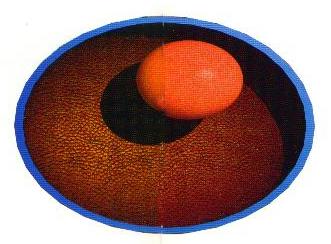 |
The CD4+ cell (sometimes
called a T-helper cell) is a white blood cell that is a part of our immune system, which
helps us fight infection. |
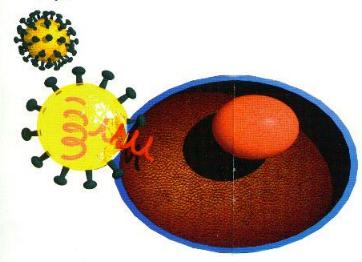 |
HIV attacks these cells
and turns them into HIV factors. As HIV copies are manufactured, the CD4+ cells are
effectively destroyed over time. |
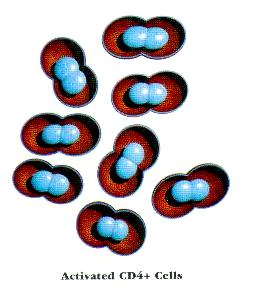 |
Once inside the CD4+
cell, the HIV's single strand RNA (red coil) uses an enzyme (e) known as "reverse
transcriptase" to convert HIV RNA into double strand DNA. |
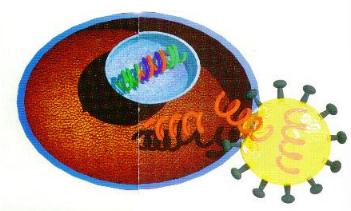 |
The HIV DNA (red-blue
double coil) moves into the nucleus of the CD4+ cell, where it becomes part of the CD4+
cell's own DNA. |
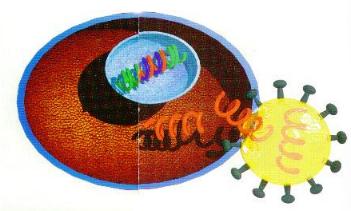 |
Once HIV DNA is in the
nucleus, it takes over the CD4+ cell and instructs the cell to produce more HIV virus,
which are sent out to infect more CD4+ cells. |
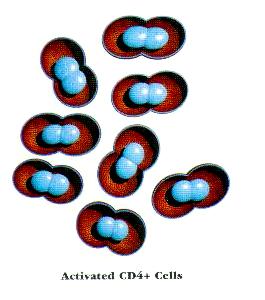 |
HIV attacks both
activated CD4+ cells which have been "turned on" and are dividing and actively
fighting infection . . . |
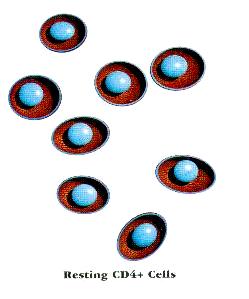 |
. . . and resting CD4+ cells
which have not encountered any infection and are waiting to be called into action. |
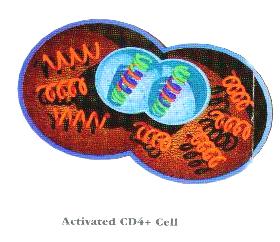 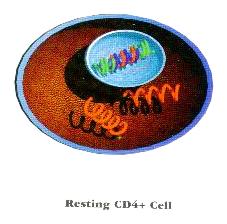 |
While both activated and
resting CD4+ cells are attacked by the HIV, activated cells reproduce the virus faster and
in greater amounts. |
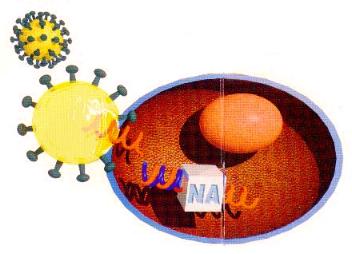 |
Drugs know as
"nucleoside analogues" (NA) bind the RNA of the HIV virus and interfere with the
DNA building process. The virus begins to produce its DNA, but the viral DNA is incomplete
and unable to make new copies of the viruses. |
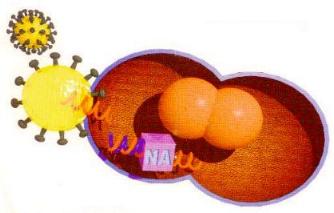 |
Some nucleoside analogue
drugs such as Zerit (stavudine, d4T) and Retrovir (zidovudine, AZT) are known as
thymidine analogues. Thymidine analogues (NA) are more effective in activated CD4+
cells. |
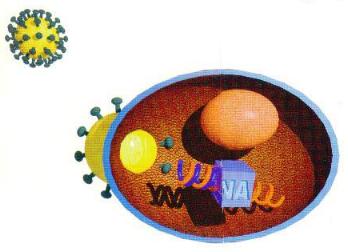 |
Non-Thymidine nucleoside
analogues (NA) such as Videx (didanosine, ddI), Hivid (zalcitabine, ddC), and Epivir
(Lamivudine, 3TC) are more effective in resting CD4+ cells. |
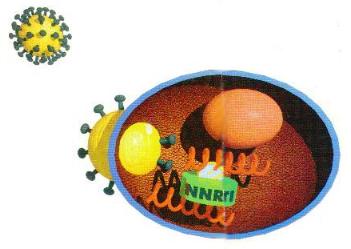 |
Another class of
antiretroviral agents is called " non-nucleoside reverse transcriptase
inhibitors" (NNRTI). This class stops HIV production by attaching itself to the
reverse transcriptase enzyme. As is true with the nucleoside analogues, this also prevents
conversion of HIV RNA into DNA. NNRTI are Viramune (nevirapine) and Rescriptor (delaverdine). |
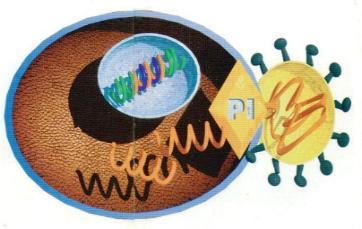 |
Protease Inhibitors (PI) such as Invirase (saquinavir methylate), Crixivan (indinavir), Norvir (ritonavir), and Viracept (nelfinavir) work at the final stage of the virus reproduction cycle - just
as the copies of the viruses are about to depart from the original CD4+ cell, to infect
other cells. There drugs prevent the HIV copies from being successfully assembled and
released to do their damage. |